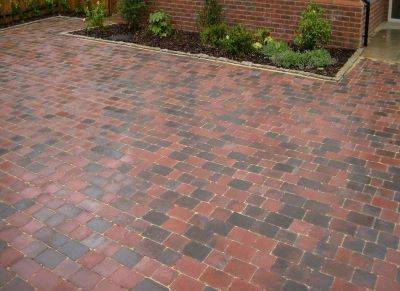Installing block paving is an excellent way to enhance the appearance and functionality of your outdoor space. Whether you’re looking to create a new driveway, patio, or pathway, this guide will walk you through the essential steps to ensure a successful installation in Leeds.
1. Planning Your Project
a) Determine the Area
Measure the area where you plan to install the block paving. Use stakes and string to outline the dimensions, ensuring your design fits your property and meets any local regulations.
b) Choose Your Materials
Select the type of block paving you want to use. Options include concrete, clay, or natural stone blocks. Consider the color, size, and pattern that best suits your style and the overall aesthetic of your home.
c) Check Local Regulations
Before you begin, check with your local council in Leeds regarding any permits or regulations that may apply to paving installations. This step is essential for ensuring compliance with local zoning laws.
2. Gather Your Tools and Materials
a) Required Tools
Ensure you have the following tools on hand:
- Shovel
- Rake
- Trowel
- Compactor (plate compactor or manual tamper)
- Level
- Rubber mallet
- Edge restraints (if needed)
- Landscaping fabric (optional)
- Jointing sand
b) Materials Needed
Gather the necessary materials:
- Block paving stones
- Sub-base material (crushed stone or gravel)
- Bedding sand
- Jointing sand
3. Prepare the Site
a) Excavate the Area
Remove any existing grass, soil, or debris from the area you marked. Excavate to a depth of at least 150-200mm (6-8 inches) to accommodate the sub-base and paving materials.
b) Create a Base
Add a layer of sub-base material (crushed stone or gravel) to the excavated area. Use a rake to spread it evenly, ensuring a thickness of about 100-150mm (4-6 inches). Compact this layer using a plate compactor to create a solid base.
4. Install the Bedding Layer
a) Add Bedding Sand
Spread a layer of bedding sand (approximately 30-50mm or 1-2 inches) over the compacted sub-base. Use a rake to level the sand and a straight edge to ensure it is flat and even.
b) Compact the Sand
Gently compact the bedding sand with a plate compactor, ensuring it is firm and level. Avoid over-compacting, as it can make it difficult to lay the blocks evenly.
5. Lay the Block Paving
a) Start from a Corner
Begin laying the block paving stones from one corner of the area, following your chosen pattern. Place the first block and ensure it is level before proceeding.
b) Use a Rubber Mallet
As you lay each block, tap it gently with a rubber mallet to ensure it is seated properly. Leave small gaps (typically 5-10mm) between the blocks for jointing sand.
c) Continue Laying the Blocks
Continue laying the blocks, working your way across the area. Periodically check the level and alignment to ensure everything is even and straight.

6. Cut Blocks as Necessary
a) Measure and Mark
As you reach the edges of the area, you may need to cut blocks to fit. Measure the space and mark the blocks to be cut.
b) Use a Block Cutter or Angle Grinder
Cut the blocks using a block cutter or an angle grinder equipped with a diamond blade. Always wear appropriate safety gear when cutting.
7. Add Edge Restraints
a) Install Edge Restraints
If your block paving project requires it, install edge restraints along the perimeter. These help keep the blocks in place and prevent movement over time. Use spikes or concrete to secure them in place.
8. Fill Joints with Sand
a) Spread Jointing Sand
Once all blocks are laid, spread jointing sand over the surface. Use a broom to sweep the sand into the gaps between the blocks, ensuring they are filled completely.
b) Compact Again
Lightly compact the surface with a plate compactor to settle the blocks and sand further. Repeat the sweeping and compacting process until the joints are filled completely.
9. Final Touches
a) Clean the Surface
Remove any excess sand from the surface of the blocks with a broom. Ensure the area is clean and tidy.
b) Water the Paving
To help the sand settle further, lightly spray the surface with water. This will also help reduce dust and enhance the overall appearance of the paving.
10. Maintain Your Block Paving
a) Regular Cleaning
To keep your block paving looking its best, regularly sweep away debris and wash the surface with water to remove dirt.
b) Reseal as Needed
Consider applying a sealant to the surface after installation and periodically thereafter to protect the blocks and enhance their color.
Conclusion
Installing block paving in Leeds can be a rewarding DIY project that enhances the functionality and aesthetic appeal of your outdoor space. By following these step-by-step guidelines, you can create a durable and attractive paving solution that adds value to your property. With proper planning, the right materials, and a bit of elbow grease, your new block paving will serve you well for years to come.

